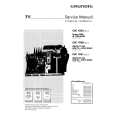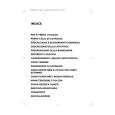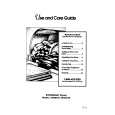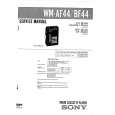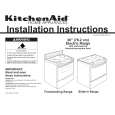|
|
|
Kategorie
|
|
Informacje
|
|
Polecamy
|
|
|
 |
|
|
Dla tego produktu nie napisano jeszcze recenzji!
 ;
Dokładna dokumentacja, pomogła w szybkiej naprawie telewizora. Dziękuję!
 ;
jedyne do czego mogę mieć zastrzeżenie to jakość zdjęć zawartych w przesłanej instrukcji serwisowej ponieważ są fatalnej jakości, praktycznie nieczytelne. tak poza tym jestem zadowolony to jest to czego szukałem.
 ;
Wszystko w porządku.
Instrukcja czytelna i kompletna.
Dziękuję.
all right!
thank you.
 ;
Bardzo dobra instrukcja. Zawiera wszystko co potrzeba, polecam!
 ;
Instrukcja jest OK. Schematy czytelne, opisane niektóre procedury.
KDC-416S/4018/G
MICROCOMPUTER'S TERMINAL DESCRIPTION
Pin 54 55 56 57 58 59 60 61 62 63 64 65 66 67 68 69 70 71 72 73 74 75 76 77 78 79 80 Function N.C N.C SW5 P ON TYPE2 N.C RESET REMO R CLK CH-REQC SW1 KEY-REQ SW2 VSS0 VDD1 X2 X1 IC(TEST) XT2 N.C VDD0 AVREF0 PHONE NOISE TYPE0 TYPE1 SMETER I/O O O O O I O I I I I I I I I I I I Description Not used Not used SW 5V control Microprocessor peripheral power supply control terminal Destination type input terminal 2 Not used Reset input terminal Data input from the remote control light sensor Clock input from RDS decoder Request input from changers Loading detection Key request terminal 12cm disc detection terminal Ground connection terminal VDD connection terminal Main clock resonator connection terminal Main clock resonator connection terminal Not used Sub clock resonator connection terminal Sub clock resonator connection terminal VDD connection terminal S-meter input from the tuner pack PHONE detection input Noise detection input Destination type input terminal 0 Destination type input terminal 1 A/D converter reference voltage input 1V or less: TEL MUTE,2.5V or greater: NAVI MUTE �Hi�: Request �Lo�: CD chucking �Lo�: Request �Lo�: 12cm disc connected to GND �Lo�: POWER ON mode �Hi�: ACC ON or during CD Loading/Eject �Lo�: System reset Processing Operation
KDC-416S/4018/G
ADJUSTMENT
Test Mode
1. How to enter test mode While holding the FM key and preset 6 key, reset the unit. All display segments light up when the test mode is entered. 2. How to exit from test mode Reset the unit. The test mode is not terminated by turning ACC off, power off, momentary power down or panel detaching. 3. Test mode specifications of CD receiver � Pressing the Track Up key jumps to tracks in the following sequence: No.9�No.15�No.10�No.11�No.12�No.13�No.14�No.9 (Repeats the cycle) � Pressing the Track Down key jumps to the track immediately before the track being played. � Pressing Preset 1 key jumps to track No. 28. � Forced ejection is not provided. 4. Test mode specifications of cassette receiver � Blank skip (B.S) is off. � Pressing the ATT key ejects the cassette. 5. Audio functions � Pressing the AUDIO key or the OPEN/CLOSE key on the remote controller initiates the Audio mode. � In the Audio adjustment mode, the Seek Up/Down keys on the remote controller can only be pressed shortly. (They cannot be held depressed.) � The volume is �10 dB (which is displayed as �30�). � LOUDNESS is OFF. � The Bass/Treble Up/Down and Balance/Fader Up/Down buttons function as full-boost/full-cut and full-front/full-rear respectively. 6. Menu mode � Pressing the CLK or the DNPP key on the remote controller initiates the Menu mode. � In the Menu mode, the Seek Up/Down keys on the remote controller can only be pressed shortly . (They cannot be held depressed.) � With the models incorporating RDS, the first operation in the menu becomes local seek. 7. Version and operating hours display � The following table shows the key operations and resulting display information. Key Operation Display Pressing Preset 1 Version (Date and time display) Pressing Preset 3 CD (or TAPE with C/R models) operating hours Pressing Preset 5 CD (or TAPE with C/R models) ejection count � Holding Preset 3 while the operating hour information is displayed clears it. � Holding Preset 5 while the ejection count information is displayed clears it.
Adjustment Mode
Adjustable items 1: Stereo Decoder Subaddress: 9 2: Configuration Subaddress: D Default values If they are not written in the EEPROM, the default values specified by the IC developer are set in IC2-3. Adjustment procedure 1: Enter the IC2-3 Adjustment mode by resetting the unit while holding d + h. 2: Select the TUNER source by pressing SRC. 3: When the adjustment mode is entered, the display shows a 2-digit hex number. 4: When preset a or s is recalled, the setting values corresponding to the pressed number are displayed. (The displayed values are those in the RAM.) 5: Vary each setting value using 4 or ¢ 6: Store the values in the corresponding preset number. 7: The settings can be performed individually for each item. (It is not required to store all the values together.) 8: After storing the values, reset the unit to exit from the adjustment mode. The values set in the EEPROM will be read during the resetting. 9: When the band is switched, there may be cases in which the preset number being displayed does not coincide with the stored setting value. To check this , be sure to recall the preset number after you switch the band.
connected to GND N.C. connected to BU5V lines
I I I I
Notes
1: The items which are not stored will be set to the default values. 2: Once a value is stored in memory, the value will always be used later. (It is not allowed to modify the setting values by switching the destination type.)
5
6
|
|
 |
> |
|
